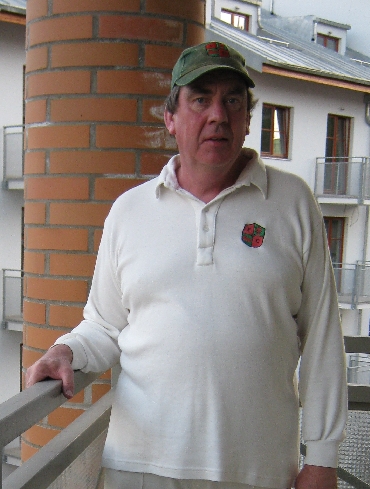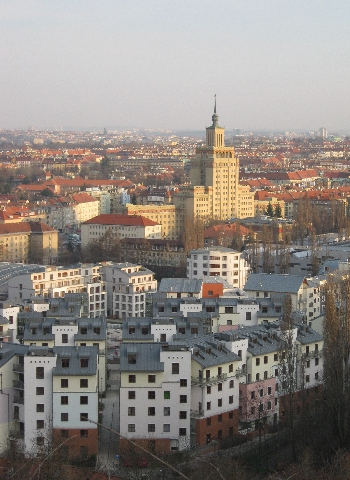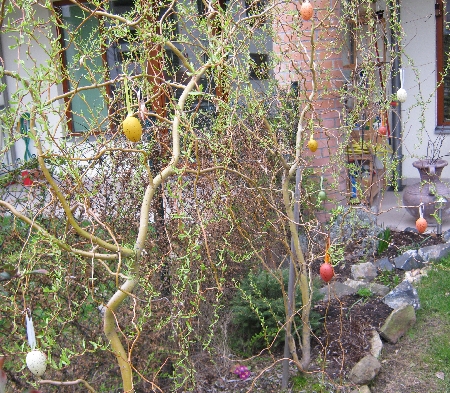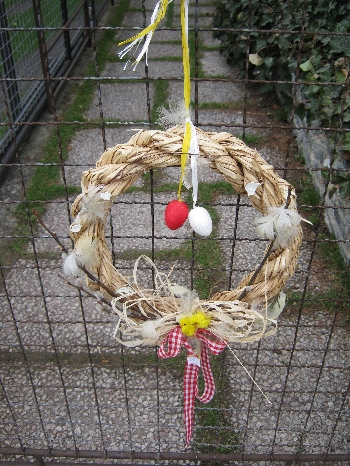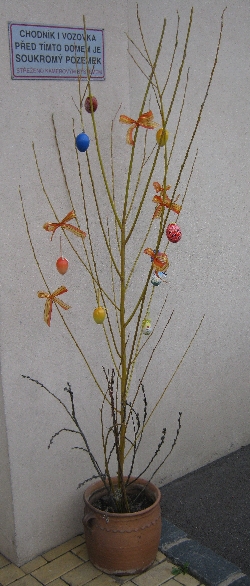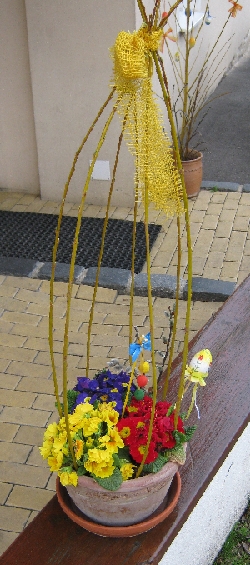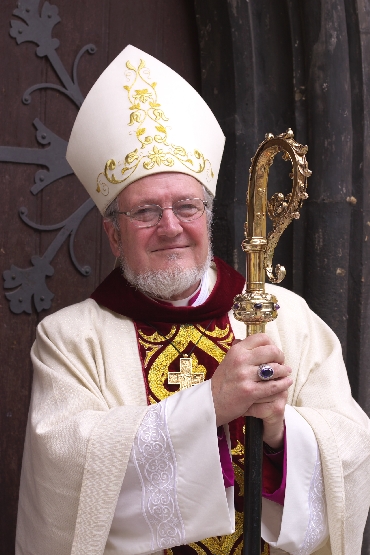
Sincere apologies to everyone who follows my blog that I haven’t posted anything for more than three weeks. It has been a very busy time with preparations for our Annual Church Meeting held on Sunday 25th April and the following weekend having an Episcopal visit from The Rt. Rev’d Dr. Geoffrey Rowell. Although his visit gave me an extremely busy two days, the timing of it allowed him to help the newly elected Church Council begin addressing issues arising out of the Annual Meeting and helping us plot a way forward through the financial problems we are currently facing.
Such is the size of the Anglican Diocese of Gibraltar in Europe that this was the first visit Bishop Geoffrey had made to the Prague Chaplaincy since March 2005. He was meant to stay on for an Episcopal visit after attending the annual meeting between Anglican and Old Catholic Bishops which took place at Karlik, just outside Prague, at the end of January 2009 which I wrote about in an article entitled ‘Episcopal Taxi Service’, my first ever blog post. But plans changed when it was announced that the newly elected Patriarch of the Russian Orthodox Church was to be enthroned in Moscow on Sunday 1st February 2009 and Bishop Geoffrey had instead to be in attendance there, representing the Archbishop of Canterbury.
Volcanic ash having finally cleared, Bishop Geoffrey flew into Prague from London Gatwick, late on the evening of Friday 30th April. I met him at the airport and drove him to the Chaplaincy Flat where he stayed in our guest bedroom for two nights. Oscar immediately made friends with him but was a little put out at being banished from a room that he regards as his bedroom!
On Saturday morning, we had a long talk updating Bishop Geoffrey about the various issues facing the Chaplaincy which would be the main subjects for discussion at the first meeting of the newly elected Church Council later that afternoon. Then the Churchwardens took him out for lunch for their own private conversations with him, before bringing him on to the Council meeting. In the evening, we took him for a short walking tour of the Old Town before he treated us to supper at Krcma, one of our favourite eating places that specialises in Czech cuisine.

On Sunday morning, Bishop Geoffrey was the celebrant and preacher at our Sunday Eucharist. During the service, the newly elected Churchwardens took their oaths of office. Normally each year, they do this before me and I admit them to office on behalf of the Bishop. With the Bishop being present, he was able to do it for himself! Following the service, Bishop Geoffrey met with many of the congregation at Coffee Hour in nearby Klimentská 18.
Sunday afternoon and early evening were taken up with Episcopal meetings. Whenever Bishop Geoffrey makes a Chaplaincy visit, he likes to meet the leader of the majority Church of the country where the Chaplaincy is situated which in our case is the Roman Catholic Church. Bishop Geoffrey knew Cardinal Vlk, the previous Roman Catholic Archbishop of Prague, very well. However, Cardinal Vlk was finally allowed by the Pope to retire earlier this year and has been succeeded by Archbishop Dominik Duka. Archbishop Duka is very newly in post having only been enthroned in St. Vitus Cathedral on 10th April.
Our meeting took place in the Archbishop’s Palace which overlooks Hradcanské namestí at the western end of Prague Castle. We (Bishop Geoffrey, Churchwarden Gerry Turner & I) were greeted warmly by Father Tomáš Roule, who was secretary to Cardinal Vlk and has retained that role with Archbishop Duka. Fortunately, he trained for the priesthood in Ireland and therefore has good English. It was through my contacts with Father Tomáš that I had been able to organise this meeting.
Archbishop Duka also greeted us very warmly telling Bishop Geoffrey how pleased he was to welcome his first ecumenical guest! There discussions ranged over a wide range of issues including the forthcoming visit by Pope Benedict to the UK. Although Gerry was there to translate, we soon discovered that Archbishop Duka could speak quite good English which he insisted on using and only occasionally turned to Gerry for help with some more difficult phrases. My only regret is that I accidentally left my camera in the car and therefore did not get a photographic record of the meeting.

In the early evening, our second Episcopal meeting took place, this time with Bishop Dušan of the Old Catholic Church in the Czech Republic under whose joint jurisdiction, along with that of Bishop Geoffrey, I come. This was a very convivial affair over a meal in Restaurace Století which is opposite the Rotunda of the Holy Cross where Bishop Dušan had just conducted a Sunday Evening Eucharist. As well as Gerry, we were also joined by Rev’d Petr Jan Vinš and between them, they translated from English to Czech and Czech to English as neither Bishop speaks the other’s native tongue! This time I did remember my camera.
Finally, it was back to the airport so that Bishop Geoffrey could catch his return flight to London Gatwick. The end of a very busy, exhausting but worthwhile weekend.

